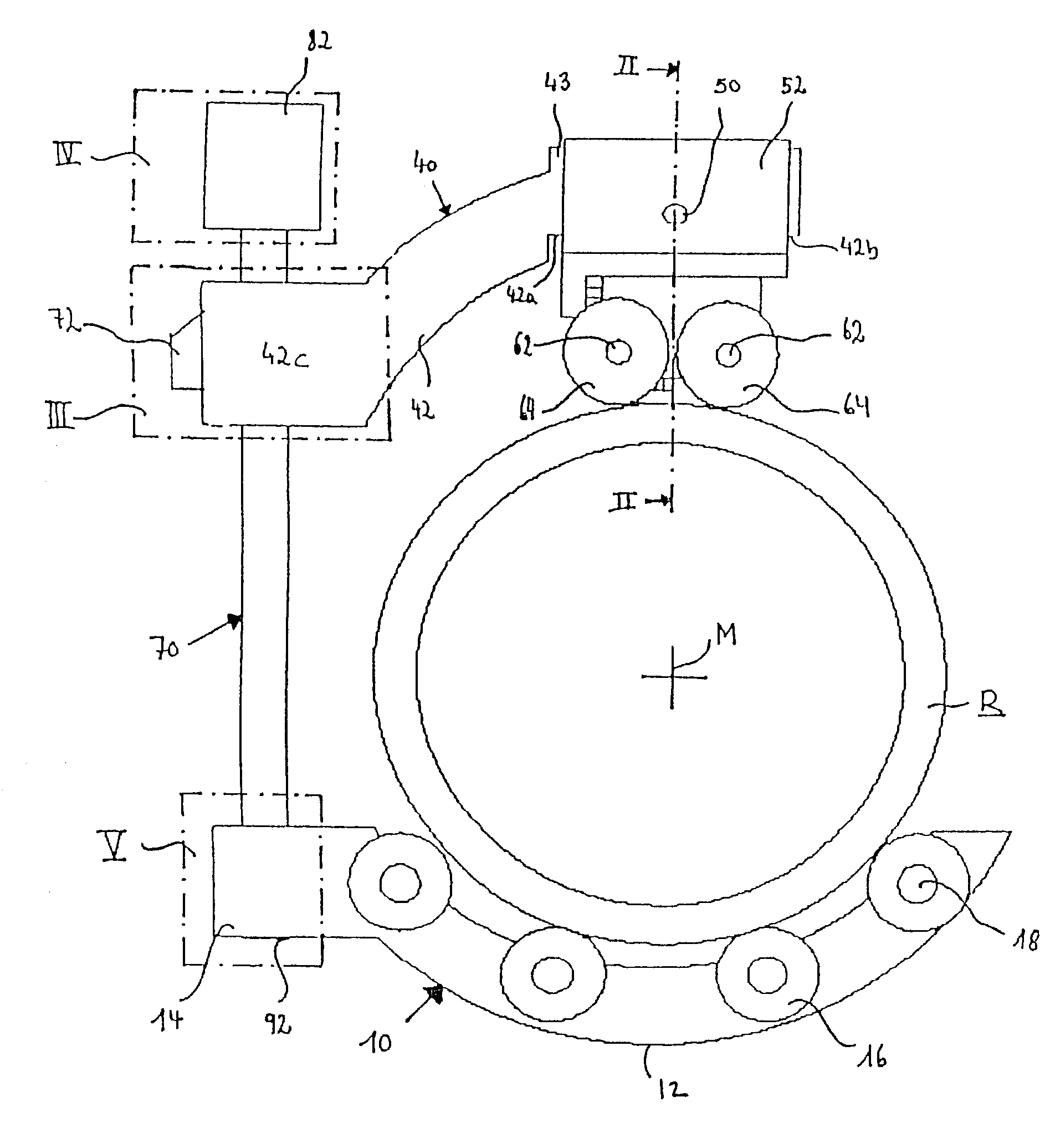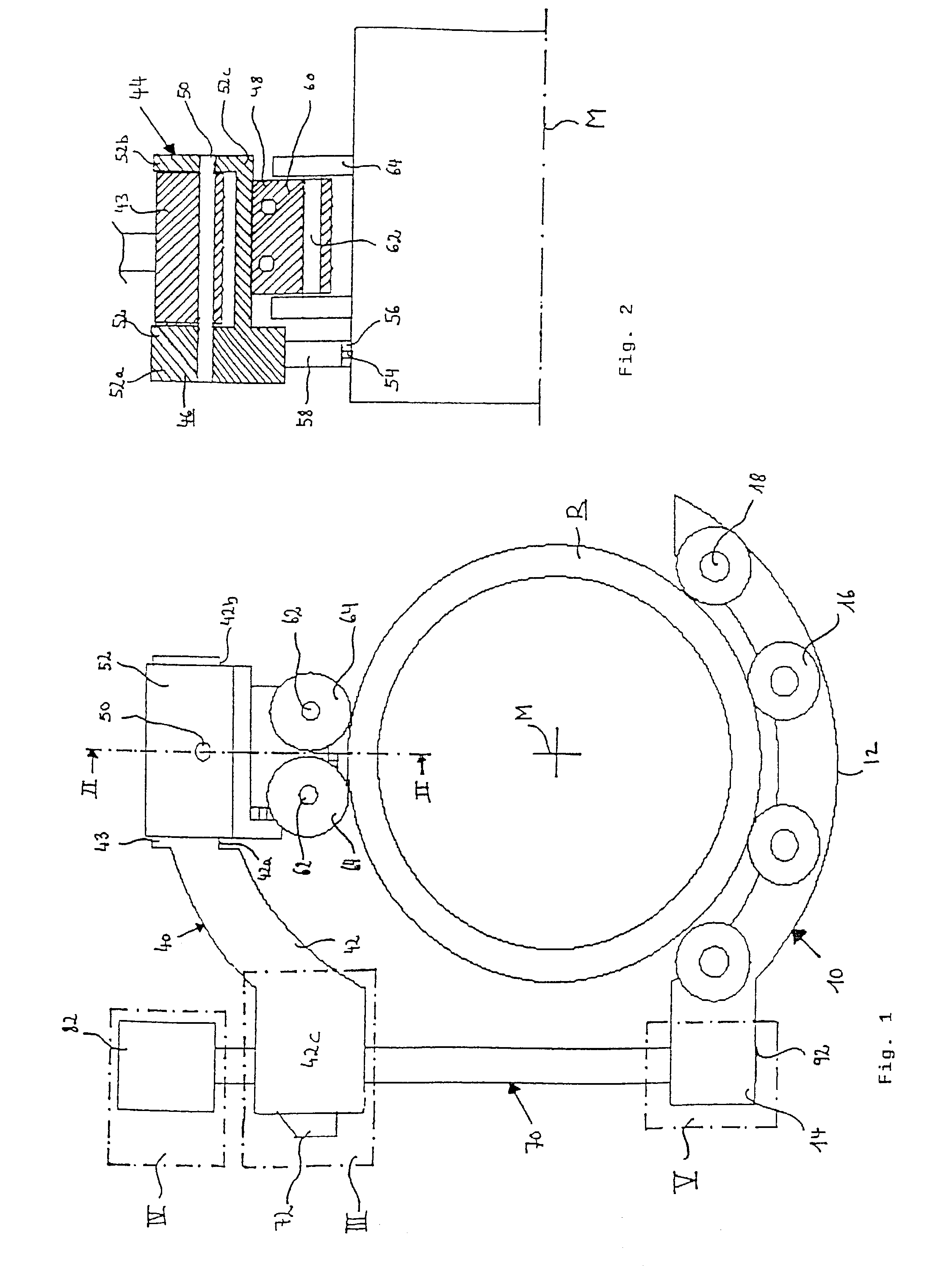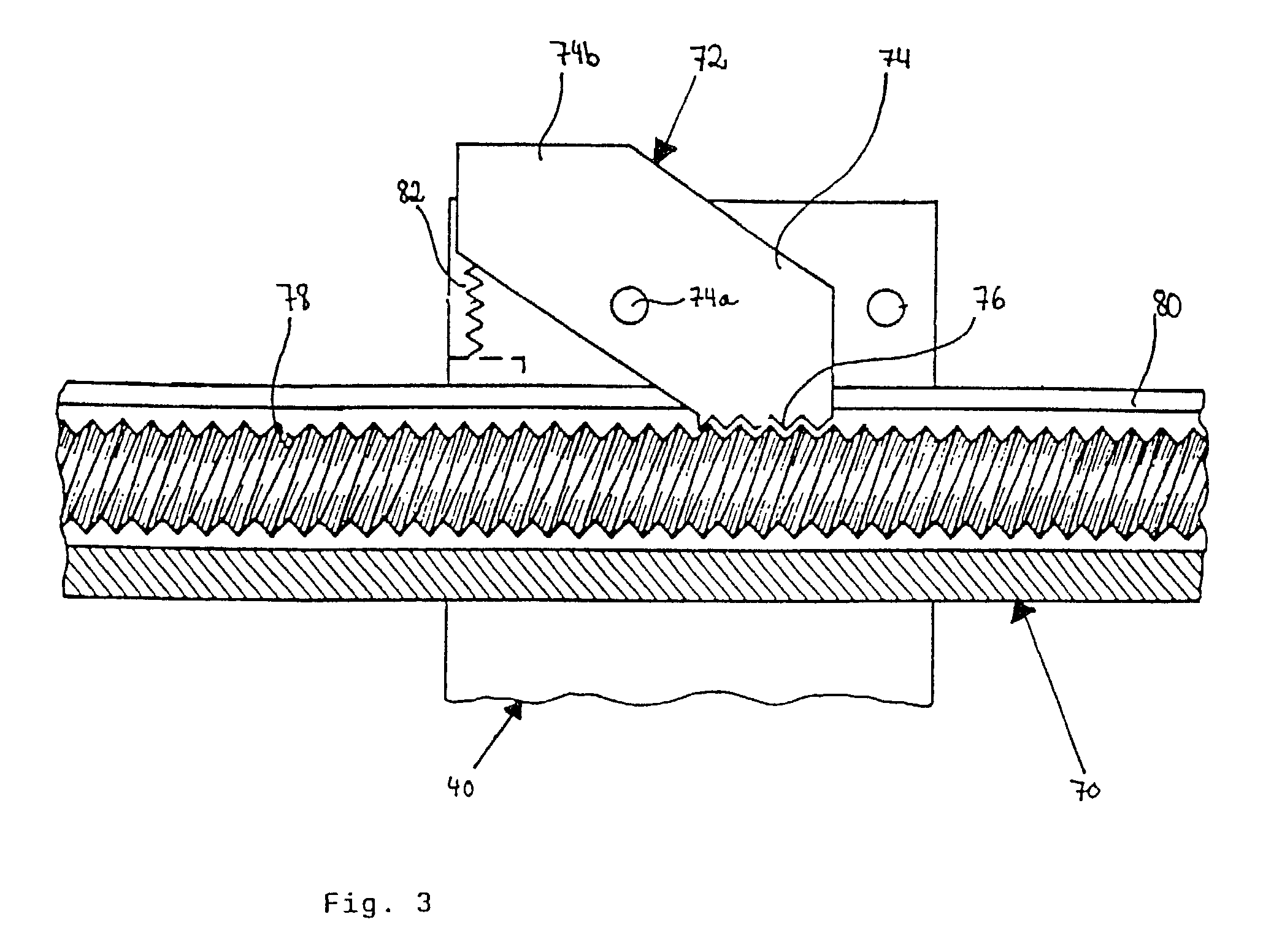Paring apparatus with pivotable paring head
- Summary
- Abstract
- Description
- Claims
- Application Information
AI Technical Summary
Benefits of technology
Problems solved by technology
Method used
Image
Examples
Embodiment Construction
[0048]The paring apparatus according to the invention has as essential structural and functional units a support unit 10, a paring unit 40 and a carrier unit 70. The support unit 10 and the paring unit 40 are held to the carrier unit 70 in such a way that the support unit 10 and the paring unit 40 are at a spacing relative to each other and define between them a plane in which, during use of the paring apparatus, the article R to be pared is arranged. In the illustrated embodiment the article R to be pared is a plastic tube.
[0049]For the purposes of adjusting the spacing between the support unit 10 and the paring unit 40 the carrier unit 70 is provided with a spindle drive which is described in greater detail hereinafter. In this case the spacing between the support unit 10 and the paring unit 40 is determined by the diameter of the tubular article R to be pared.
[0050]The support unit 10 firstly has a carrier arm 12 which is approximately in the shape of a circular arc. At the left-...
PUM
| Property | Measurement | Unit |
|---|---|---|
| Elasticity | aaaaa | aaaaa |
| Resilience | aaaaa | aaaaa |
| Sliding friction | aaaaa | aaaaa |
Abstract
Description
Claims
Application Information
 Login to view more
Login to view more - R&D Engineer
- R&D Manager
- IP Professional
- Industry Leading Data Capabilities
- Powerful AI technology
- Patent DNA Extraction
Browse by: Latest US Patents, China's latest patents, Technical Efficacy Thesaurus, Application Domain, Technology Topic.
© 2024 PatSnap. All rights reserved.Legal|Privacy policy|Modern Slavery Act Transparency Statement|Sitemap



